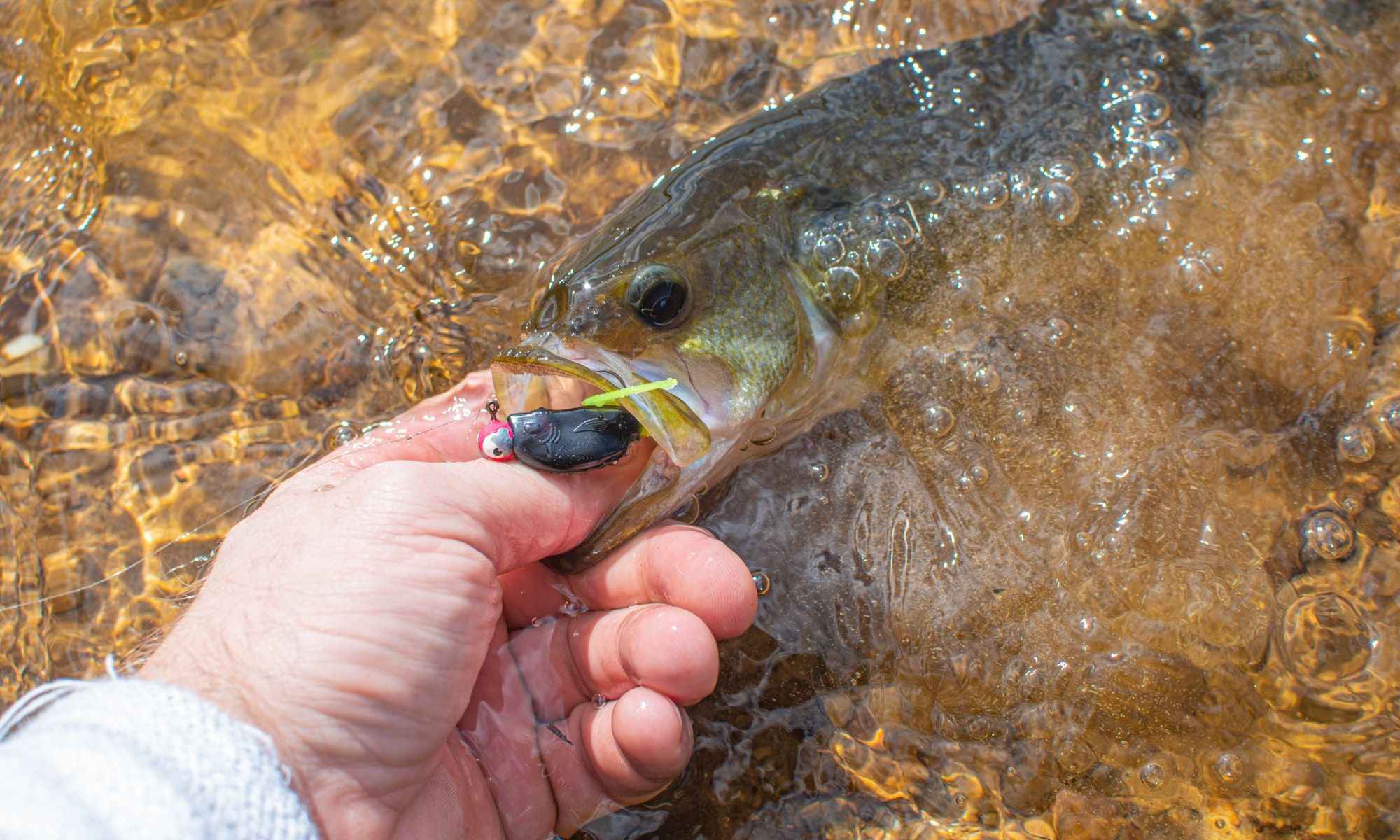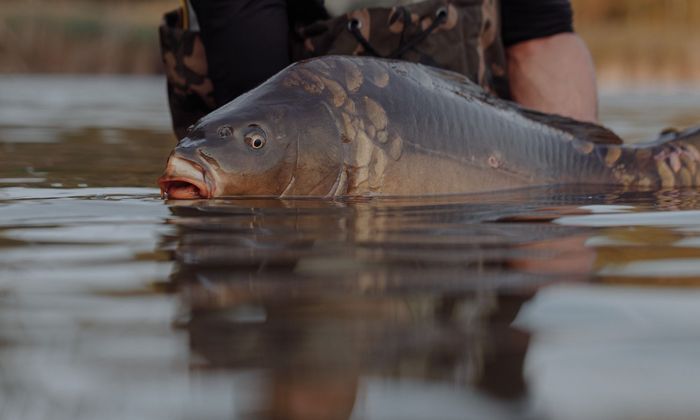10 Bass Fishing Lures Every Angler Should Have in Their Tackle Box
Catch those bass fast with these 10 lures you should have in your tackle box.

With so many bass fishing lures to choose from, it can be a daunting task to narrow it down to the essentials. We're giving you the basics in this article, meaning that having any one of these in your tackle box should guarantee you a catch no matter where and when you fish.
Don't forget that half the fun of bass fishing is picking and collecting lures in the first place! With that said, let's take a look at our list.
10 Bass Fishing Lures Every Angler Should Have in Their Tackle Box
1. Plastic Stick Baits & Worms
Stick baits and worms are a perennial favorite – they're so reliable that all you have to do is put it in front of the bass to get a strike.

Generally considered as topwater baits, because of the commotion they create on the water’s surface, stick baits are wonderfully effective. They move smoothly in the water, acting like live bait once a fish has latched on. The plastic silicone material feels authentic and is fantastic at imitating worms. As easy as it sounds, using stick baits still requires skill because anglers need to maneuver the lure in such a way so that it imitates the movement of a surface swimming fish.
Often, stick baits and plastic worms are best used in waters with a temperature above 10 degrees Celsius (50-degrees Fahrenheit). They work even better in clear, open water because they're more visible in the upper layers of the water column.
Whether you present it wacky rigged, Texas rigged, or as a shaky head, stick baits and worms are simply versatile because they can be rigged in a variety of ways. They can be used year-round and are available in various colors.
2. Jigs
Jigs are popular because of their versatility and seasonless use. Although primarily known as a sinking-style lure, they can be used in shallow water and as a finesse rig as well.
These lures can be maneuvered in a variety of ways which include flipping, casting, dragging, hopping, and swimming. However, flipping is usually the favored technique even though it requires extra attention to accuracy and angles of entry.
Whether you’re using a skirted jig or a weedless one, anglers will need to practice handling it. Its vertical action is a little different from classic casting in that it’s meant to imitate a wounded baitfish. While it may keep an angler’s wrists busy, it’s usually used in a stationary position, which makes it useful off docks or from the shore.

Jigs can likewise be paired with a variety of trailers for more heft, therefore making them ideal for a range of situations, and choosing a jighead is an art in itself. Whether you’re flipping in heavy cover, casting in deepwater structures, or dragging it along the bottom, the jig is an all-around workhorse.
They are also a well-known imitator that can easily mimic crawfish, shad, or bream. Anglers are always known to have a jig in their tackle, but the most intelligent ones will always still match the hatch.
3. Billed Crankbaits
Crankbaits have a stiffer body compared to plastic stick baits and jigs because they’re meant to look more like baitfish. Although they are versatile, these lures are not as effective in areas thick with weeds and are best for lake and reservoir fishing. This is partly because crankbaits have several treble hooks attached to them, making them vulnerable to getting snagged. However, these same hooks also increase an angler's chances of hooking a fish.
Crankbaits that are lipped or have bills can dive quickly toward the depths where bass are known to be in the water column – with lures that have longer bills can usually dive deeper. They are useful for deep drop-offs and ledges and are particularly useful during warmer temperatures when bass dive deep to avoid the heat.
4. Lipless Crankbaits
Lipless crankbaits, on the other hand, rely on their weight to get them to specific depths, essentially sinking towards a specific part of the water column. They displace water as they travel which draws the attention of the fish. Lipless crankbaits work best in target spots where bass are feeding, or near grass flats and spawning areas.
Some crankbaits are also fitted with beads or rattle chambers that make noise, making the lure doubly effective. They can be fished at varying speeds and can call out fish over long distances. or slow, and can call bass from a long distance or within a large body of water such as a lake. The lipless crankbait can likewise glide along a specific depth, meaning it can stay in the strike zone of the water column for longer periods of time.
5. Spinnerbait
It would be hard to find an angler without a spinnerbait in their tackle box. These lures are flashy and are ideal for bouncing around hard cover like stumps and boulders, although they can likewise work their way through grass or weeds. While it may not be completely weedless, it can still work well in a variety of situations.
Using spinnerbaits is one of the simplest as well, which makes it a great pick for beginners. You simply cast it out and reel it back in. When retrieved, the spinner blades spin and flash, creating a disturbance in the water that bass can see, hear and feel. Spinnerbaits can cover a lot of water fairly quickly and works well around flooded brush and laydowns. Experienced anglers often use spinnerbaits to weave through thick cover, flipping and sinking it in shoreline structure but alternatively swimming it on the surface as well.
Spinnerbaits can vary by the type of blade used and the three most common options are the willow leaf blade, Colorada blade, and Indiana blade. Deciding on the type of blade is paramount to your presentation and ultimately your success.
6. Frog
Frogs are not the most popular lures but you won’t find a bass angler without them, especially those who prefer to fish in lakes abundant with vegetation. They are weedless so they’ll work well in any type of cover, especially hard-to-reach areas such as weeds, brush, hanging cover, or lily pads. While frogs can work well in a variety of situations, they're more known as a specific tool to handle a specific job. Heavy tackle and braided line are required when using frogs in deep cover so that you can power the bass out through the obstructions. Walking frogs or working them in a “walk-the-dog” technique is usually effective.

7. Jerkbait
Minnows are one of largemouth bass favorite prey and that’s what makes the jerkbait so effective. They look and act like minnows, making them very efficient in catching bass. They are best used in colder waters during fall and winter, and their thin streamlined designs are useful in depths of around 1 to 10 feet of water (although flaring it up with brighter colors such as red and rigging them drop shot style can help with deeper parts of the water). Jerkbaits can be used year-round and work particularly well in schools of bass, especially those that are feeding towards the upper surface of the water column.
The trick with jerkbaits lies in the "snap-pause" retrieve – anglers need to move jerkbait in an erratic motion so that it looks like a baitifsh escaping a predator with darting movements. They're ideal to use when fishing structures such as rocky shorelines, grass flats, ledges, drop-offs, and open water. They can also have a lip or a bill like a crankbait, but the bill is usually smaller in comparison.
8. Swimbait
Swimbaits can sometimes be confused with jerkbaits, but there are several noticeable differences. These lures have hinged or jointed bodies made of plastic or metal, which are designed to imitate the appearance and movement of fish. Secondly, they have a realistic paddle tail that moves back and forth during the retrieve.
Swimbaits must be used with slow retrieves along the bottom for the best results so that their swimming motion can be fully utilized. They're useful with schools of baitfish as well, usually where bass are lurking nearby and feeding near the edges.
9. Buzzbait
Buzzbaits have flat propeller-like blades that spin and create a buzzing sound in the water as they're retrieved. Typically though, louder is better for aggressive predators or during strong winds while low-key variations work well in calmer waters.
Buzzbaits work particularly well in spring and summer and can be used around weed edges, open water, and over lily pads. Just remember that you need to retrieve it quickly after casting out so that you can activate the blades. Once you get the blades turning, you can mix up the speed of your retrieve and the direction it’s moving.
This topwater lure has been around since the 60s and is usually made of hard plastic or lightweight aluminum. They come in an array of weights and blade styles for different environments. Seasoned bass fishermen usually alter the shape of the blades by bending and modifying the angle of the propellers, which can change the buzzbait’s action in the water.
10. Topwater Poppers
Last but not the least, topwater poppers are another useful lure to have in your arsenal. They have cupped lips to create disturbances on the surface of the water by causing a popping, splashing, or chugging sound during the retrieve.
With a variety of styles, colors, and patterns, topwater poppers imitate baitfish that black bass feed on, such as frogs, shad, bluegill, and minnows. They can be used near grass, stumps, and shorelines, but work particularly well in open and clear water. When the water is particularly calm and clear, bass that are as deep as 30 feet below can be drawn towards the sound that poppers make.
Feel the Bass
If you're new to the world of bass fishing, having one of these lures in your tackle should help get you started. Although it may seem overwhelming to have so many choices, if you master these basics lures with bass, you'll do just fine.




